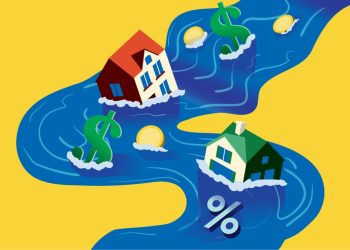 (MCT)—When I started writing about real estate full time, the experts cautioned me not to chase month-to-month data, and to focus instead on quarterly and yearly figures.
(MCT)—When I started writing about real estate full time, the experts cautioned me not to chase month-to-month data, and to focus instead on quarterly and yearly figures.
I’ve tried to toe that line. As agents, builders and economists would be quick to tell you, real estate is cyclical—“a roller-coaster ride,” as someone once told me—and it’s best to look at the market over time to determine long-term trends.
These days, few will argue that the housing market is still seeing low mortgage-application rates, housing starts and home sales, and that many potential homeowners remain cautious.
Month-to-month numbers are likely to be especially bumpy, says Don Frommeyer, of the National Association of Mortgage Brokers.
“In real estate, it’s important to focus on the year-to-year outlook,” Frommeyer says. “A lot of outside factors can have an impact on monthly numbers, including harsh weather or emergencies.”
Last winter in Mount Airy, Pa., was a good illustration of the effect of weather on the numbers.
Ruth Feldman of Weichert Realtors McCarthy Associates says days on market there increased this year to 119 days, from 75.
Pending and sold units also were down in the first couple months of the year, and Feldman blamed the weather for both.
In Washington Township, says Mike Lentz of Keller Williams Realty, the reluctance of sellers to put their houses on the market in cold and snowy weather contributed to the number of multiple bids in his and other markets.
Lack of inventory makes what is on the market a valuable commodity, though the perceived value may bring offers only at or near asking price.
One of the silliest monthly measures we follow is “consumer confidence.”
This index is about as valuable as any other measure, including one done each month for home builders. Follow them for a few months, and you’ll see what I mean.
One month, we’re happy and upbeat; the next month, we behave as if we’d lost our last friend.
As economist Joel Naroff says in response to the June consumer confidence index, “in the May report, people felt reasonably good about the economy.” They are, however, “becoming more and more depressed about their incomes, as they don’t expect to see any gains this year.”
“Sometime rain, sometime sunshine,” as my Uncle Carl observed when we asked him how the weather was in Benevento, Italy, where he visited his cousins every few years.
Fortunately, Naroff didn’t settle for such a short-term approach. He says there was a “real disconnect” in the business community, which is doing everything possible to keep wages from rising “but then they complain that consumers are not buying.”
“I have says this many times, and now we see that the hard cap on wage gains is affecting confidence,” he says.
It’s hard to buy more goods when your income is stagnating, Naroff says. I say that applies also to houses—especially for the first-time buyers, we need to keep the market humming in all ranges.
So look at the overall picture first, as Frommeyer recommends.
“Our year-to-year numbers have been positive in the last year, with mortgage interest rates decreasing and housing prices and sales increasing,” he says.
He noted, too, that not all the markets have the same experience.
Uncle Carl knew that if it was raining in Apice, it might be sunny in Reino. That’s just the way it is.
©2014 The Philadelphia Inquirer
Distributed by MCT Information Services










